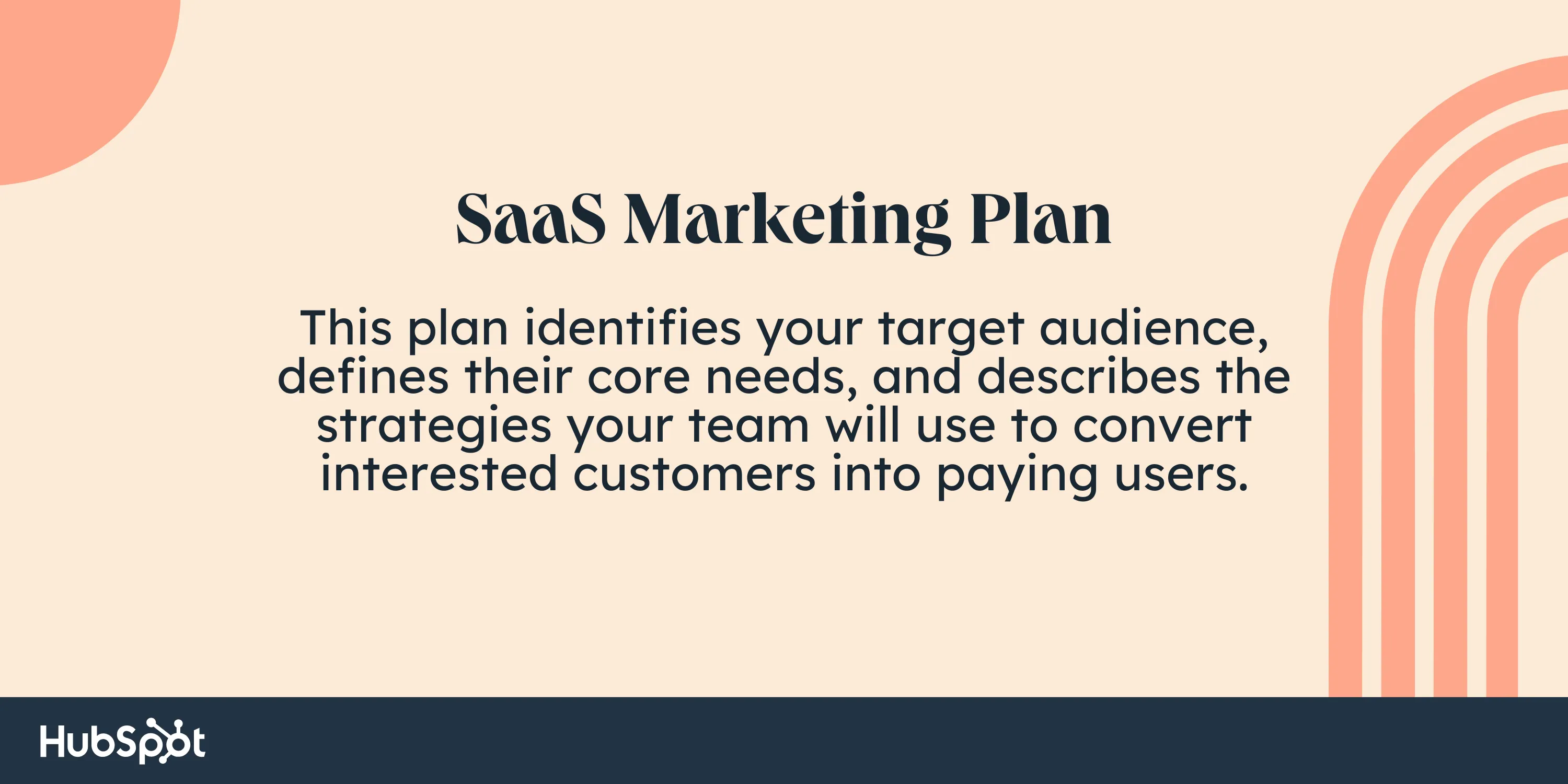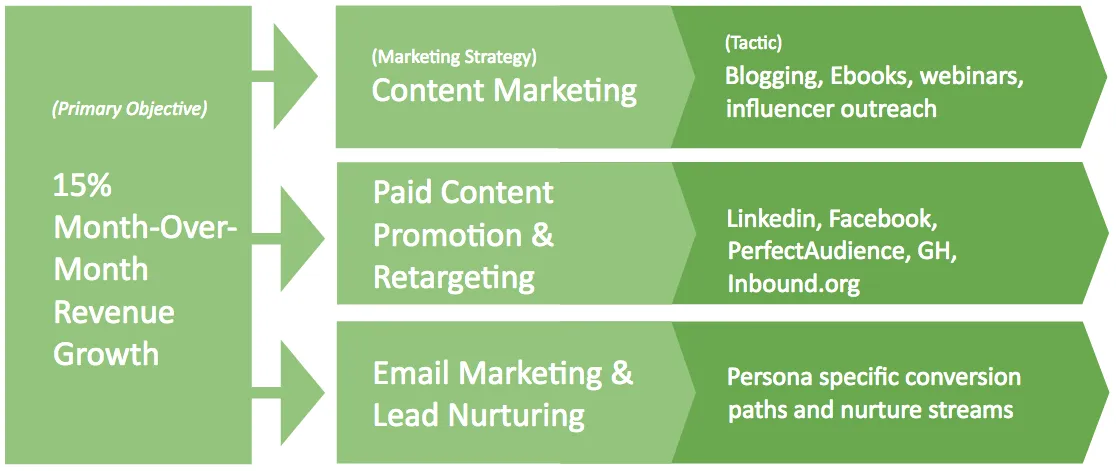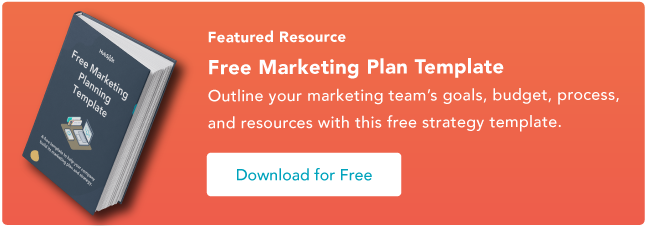Retention, Referral, and Revenue: How to Create an Effective SaaS Marketing Plan
Marketing plans provide a framework to funnel customers from awareness to decision to purchase.

Marketing plans provide a framework to funnel customers from awareness to decision to purchase. When it comes to software-as-a-service (SaaS) offerings, these plans must account for the recurring nature of SaaS solutions. There's a special focus on retention and referral over purchase and loyalty. Here’s what you need to know about SaaS marketing plans, what sets them apart from traditional frameworks, and how your company can create a plan that drives revenue. Table of Contents A SaaS marketing plan identifies your target audience, defines their core needs, and describes the strategies your team will use to convert interested customers into paying users. You’ll also strategize how to retain these customers and encourage them to refer new clients. SaaS marketing is different because you’re selling an ongoing, subscription-based service. Unlike a traditional product with a single purchase point, customers pay for SaaS solutions monthly or yearly. As a result, traditional and SaaS marketing have differing aims. A traditional marketing plan aims to convert prospects into buyers who purchase product(s) in a single transaction. If these customers are happy with the products, they may return for additional transactions. SaaS marketing plans aim to turn interested parties into subscribers willing to sign on for month-to-month or yearly plans. You'll want buyers to renew these plans when they come to term and refer other customers to your service. Put simply, traditional plans focus on per-transaction revenue. SaaS plans prioritize revenue over time. These plans matter for several reasons. First, a solid marketing plan helps create a clear picture of your target market. What are they looking for in SaaS solutions? How much are they willing to spend? What would keep them coming back? Next is the improved utilization of time and resources. Plans offer a data-driven framework to help SaaS companies create campaigns that align with customer expectations. In turn, businesses can streamline the process of engagement, active interest, and conversion. This means less time and money spent per customer. Budget can then be spent on improving SaaS offerings and retention over time. Finally, marketing plans offer a blueprint for developing and maintaining customer relationships. From directly connecting with customers to creating customized offers, you'll want to find ways to increase customer satisfaction. This increases the chances of SaaS renewal when terms are up. The first step in creating a SaaS marketing plan is identifying buyer personas. These personas are idealized, hypothetical versions of customers that help you define marketing strategies. For example, a buyer persona for your CRM SaaS tool might be an HR leader at a midsize enterprise. They may currently struggle with fragmented benefit and payroll processes across their organization. By defining these key pain points and how your solution solves them, you can create marketing copy that speaks to your ideal audience. Next up is researching the competition. The more you know about what other SaaS providers are doing, the better prepared you are to outperform. Integrating this information into your marketing plan helps ensure that campaigns aren’t treading on ground already covered by your competition. Key goals help you measure the success of your marketing plan. These goals should be SMART — specific, measurable, achievable, realistic, and time-bound. Let’s say you’re looking to boost SaaS sales. Finally, it’s critical to define a set period for measurement. Once the period ends, compare current measurements to past data and see if there has been any improvement. How and where you connect with prospects matters and is an essential part of your marketing plan. Here, research on your customer base informs the ideal channel combination. Consider the impact of demographics. While 64% of Baby Boomers preferred email communication, just 22% said that social media was their go-to channel. For Gen Z, meanwhile, social media came first for 46%. This speaks to the need for channel marketing that aligns with target audience expectations. Next is setting your budget. Each channel comes with an associated cost, and the more quickly you want the results, the more you have to spend. As a result, it’s worth sitting down with marketing, sales, and finance teams to create a budget. This should provide enough room to finish the job without breaking the bank. No marketing plan is complete without a clear description of what you’re measuring, how often you’re measuring it, and what results you want to see. By defining metrics before you start, you’re better prepared to ensure that outcomes align with expectations. Finally, make sure your marketing plan builds in time for both initial and ongoing tests. These tests can be straightforward A/B analyses to see which of the two campaigns offers better performance. They can also take the form of more in-depth user sentiment surveys and social media analysis. For growth to be lasting, it must be backed by clear goals and an operational framework. When it comes to a marketing plan, this takes two distinct pieces. The first is aligning your marketing and sales teams. The second is giving them the resources that they need to be successful. If you haven‘t done so yet, it’s time to establish a revenue or lead commitment based on your goals. Then, lock these goals in with a service-level agreement between your marketing and sales teams. From here, define how many marketing-qualified leads must be delivered to sales in a given month. Then, decide what percentage of those will become sales-qualified, then opportunities, then customers. These metrics allow you to determine how many account executives you'll need for the sales team. It will also help you determine how many visitors the marketing team needs to generate to hit its goals. There are many different fields of thought when it comes to setting a budget. According to Delloite, Marketing will comprise roughly 13.6% of a company’s total budget in 2023. Businesses under five typically spend 12-20% of their revenue on marketing. Whatever model you choose, it's important to ensure you set aside the resources to hit your goals. You likely have already spent ample time gaining an understanding of your audience. If you haven't yet, document this information in buyer personas. This understanding will be the foundation of every decision you make moving forward. Even if you have already done this, revisit them to ensure they're still accurate. In fact, doing this was one of the critical factors that enabled us to double our blog leads. In 2023, inbound marketing is table stakes for SaaS companies. Of course, for content to be successful, the strategy must be high-value to break through. In your marketing plan, look at some examples of successful content to get the creative juices flowing. Then define the key topics and content types and how they relate to your ongoing initiatives. Numerous SaaS companies have seen success with various types of paid advertising. The channels that make the most sense for your business need to be tested. When done correctly, it's possible to lower cost-per-lead and -acquisition. Recognizing that as your lead velocity and team scale, the importance of marketing automation will grow. This means that effective lead nurturing must be prioritized at the top of the funnel and in your free trial or post-demo stage. Approach this by creating nurture streams and experiences for each buyer persona. This allows you to resell your value proposition and offer them information to re-engage. In some instances, these campaigns can even run for a full year, with an email cadence of 1, 4, 7, 14, 21, 30, and 45 days, and then every two weeks after that. It‘s time to assess the resources you’ll need to hit your growth goals. This includes the following. First, ask what will be done in-house and what will be outsourced to an agency. Companies are increasingly turning to agencies for staff, executives, and freelancers for content creation. If the team is going to be built in-house, specialize your team by funnel stage. In doing so, prioritize the top of the funnel first, as investments in these leads make everything else possible downstream. Of course, any good marketing plan will include how it will be measured. Here are the key metrics you should look to when gauging the marketing success of your SaaS. MQL velocity has been called “the most important metric in SaaS.” By looking at MQL velocity, you can see forward-looking insights beyond a traditional pipeline report. As the business scales, the core metrics you focus on will become less relevant as your user base expands. Here's one of my favorite graphics representing this evolution. Best practices are important in avoiding pitfalls and helping your SaaS marketing plan succeed. Let’s explore a few below. Discounts often seem like a win-win: Customers get a better deal, and you get new clients. The problem? Discounted rates on SaaS products can bring in customers that are outside your target audience. Once their discounted rate ends, they often churn to other providers that offer similar discounts. Instead of competing on lower prices, compete on performance: What do you offer that other businesses don’t? What sets you apart? The more you know about what users want, the better. As a result, it’s worth reading SaaS review sites to glean information about user pain points. It’s also a good idea to submit your solution for review. While specific feedback may be hard to hear, it offers the opportunity to improve your product and generate more revenue. Choice helps keep clients. While some customers may prefer year-long contracts paid month-to-month, some are willing to pay more per month for shorter terms. Others prefer to pay up-front for a year of service (or more) if paying in full helps bring the price down. Offering multiple options helps you cast a wider customer net. Never exaggerate your capabilities or lie about features. This means that if you have a new feature in the pipeline that should go live in two months, leave it out of the marketing plan. Here’s why: Long-term relationships depend on trust. If you make promises you can’t keep, customers will go somewhere else. It may seem counterintuitive, but raising your costs can actually increase your customer base. Here’s why: Customers are willing to pay more for best-in-class services. If you can show how your SaaS product addresses their pain points, you can charge higher prices while growing your customer base. Creating a comprehensive SaaS marketing plan can be daunting, but having a clear strategy at the outset will set you up for success. Now, it’s time to get started.
![Free Marketing Plan Template [Get Your Copy]](https://no-cache.hubspot.com/cta/default/53/aacfe6c7-71e6-4f49-979f-76099062afa0.png)
What is a SaaS marketing plan?
What Makes SaaS Marketing Different

Why SaaS Marketing Plans Matter
How to Create a SaaS Marketing Plan
1. Pinpoint your buyer personas.
2. Research the competition.
3. Identify key goals.
4. Choose your channels.
5. Set your budget.
6. Measure your progress.
7. Test, test, test.
The Four Core Tenets of a SaaS Marketing Plan
1. Goal Setting
Marketing and Sales Alignment
Marketing Budget
2. Tactics

Audience Targeting and Segmentation
Keep the Content Flowing
Paid Content Promotion and Retargeting
Develop Full Email Conversion Paths for Each Persona
3. Resources
In-house or Outsourced
Marketing Team Structure
4. Evaluation
MQL Velocity
SaaS Metrics
SaaS Marketing Plan Best Practices
1. Ditching Discounts
2. Reading Reviews
3. Offering Payment Options
4. Talking Truth
5. Increasing Subscription Costs
Making the Most of SaaS Marketing
We're committed to your privacy. HubSpot uses the information you provide to us to contact you about our relevant content, products, and services. You may unsubscribe from these communications at any time. For more information, check out our Privacy Policy.
Outline your company's marketing strategy in one simple, coherent plan.

 Lynk
Lynk 

































